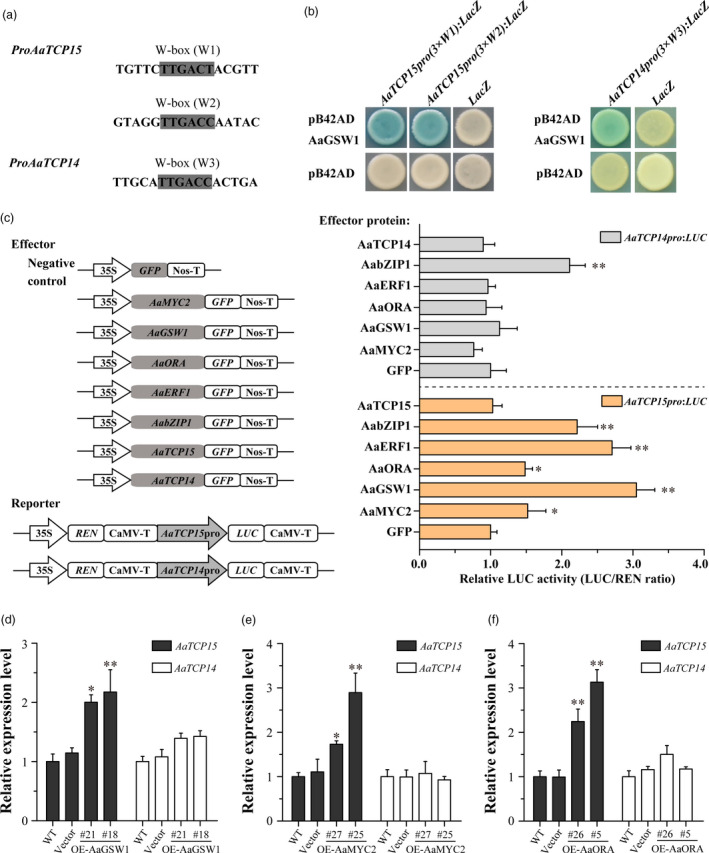Figure 6.

AaGSW1 directly and positively regulates the expression of AaTCP15 rather than AaTCP14. (a) The fragments of AaTCP15 and AaTCP14 promoters containing the intact W‐box. The W‐box motif sequences of W1, W2 and W3 are shown as grey boxes. (b) Yeast one‐hybrid (Y1H) assays showing that AaGSW1 binds to the W1 and W2 motif of AaTCP15 promoter, and W3 motif of the AaTCP14 promoter. Three tandem repeats of W1, W2 and W3 motifs were used as baits. Transformed yeast cells were grown on selective medium SD/‐Trp/‐Ura containing 20 mg/L X‐gal, and pictures were taken after 4 days of incubation at 30 °C. Blue plaques indicate protein‐DNA interactions. The Y1H assays were repeated three times, and representative results are shown. (c) Left, schematic diagrams of the effector and reporter plasmids used in Dual‐LUC assays. REN, Renilla luciferase. LUC, firefly luciferase. Right, Dual‐LUC assay in N. benthamiana leaf cells using the constructs shown at Left. The GFP effector was used as a negative control, and the LUC/REN ratios of GFP were set as 1. Three independent transfection experiments were performed. The data represent the means ± SD of three replicates from three independent experiments. *P < 0.05, **P < 0.01, Student’s t‐test. (d‐f) Expression levels of AaTCP15 and AaTCP14 in the leaves of different A. annua AaGSW1 (d), AaMYC2 (e) and AaORA (f) overexpression lines, and plants transformed with the empty vector (labelled as Vector) and WT. AaActin was used as the internal control. The data represent the means ± SD of three replicates from three cutting propagations. *P < 0.05, **P < 0.01, Student’s t‐test.
